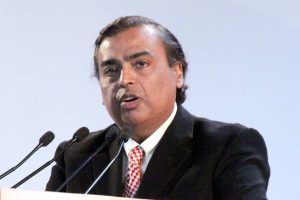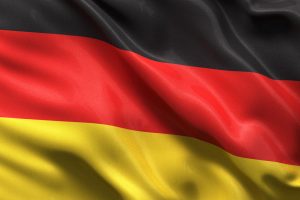President Jimmy Carter and his National Security Adviser Zbigniew Brzezinski supported a rural insurgency against Nur Mohammed Taraki which led to the Soviet entry as a counter-insurgency force. As per the Carter Doctrine the Persian Gulf region was crucial to American vital interests and hence the need to put it within its “security perimeter”. The Soviets played into the US trap. Amin’s murder in 1979 saw the beginning of a civil war and the Soviet invasion led to massive international condemnation. Rural insurgency could consolidate because of the narrow and urban social base of the PDPA. Its legitimacy was further eroded by its incapacity to control the entire nation and because of its dependence on Soviet aid for survival. The Soviets tried to downplay the reforms and tried to build up PDPA as an efficiently organized political party and by the late 1980s could ensure relative peace under the able leadership of Mohammed Najibullah (1947-97). Najib could build the Afghan military by re-training it to make it efficient and that enabled him to survive. The Soviets withdrew forces in 1989 and its disintegration came as a serious blow to Najib’s regime. The end of Soviet aid and a coup organized with the support of the western powers and the Mujahideen brought Najib’s regime to an end in 1992. Najib was hanged publicly by the Taliban in 1997. After the fall of Najib’s regime none had his leadership qualities. The transitional period saw the collapse and disintegration of the army, police and the bureaucracy. It lacked Shah’s legitimacy and overall support and the PDPA’s limited urban support. Afghanistan entered a Hobbesian state of nature which quickly led to the consolidation of powers of Mujahideen, also faction-ridden and inept in providing a stable government. It faced opposition in rural areas. Massive corruption had got entrenched. Mullah Omar (1960-2013), a religious cleric organised his students to fight this corruption and had people’s support and got Pakistani’s support when he helped the latter with a safe passage of its convoy of goods. That was the beginning of a close relationship between the Taliban and Pakistan. Taliban’s hold on power for five years was tenuous. It could not build an organization like the PDPA and its rule was a far cry from the golden years of King Zahir Shah’s rule. The reason that it faced a near disintegration when the Americans intervened was because it lacked a formidable organization. But the Americans did not understand the Afghan problem any better. They tried to build a new structure bottom up which resulted only in building American clientelism. They rejected the proposal to bring back King Zahir Shah from exile which proved to be fatal. The Americans could not build an efficient army that existed under the PDPA. The army was suspect because of its communist leanings. The American-backed regimes of both Hamid Karzai and Ashraf Ghani were, unlike the PDPA, not a product of indigenous forces. It was built on limited coercion and much more important on bribes and corruption. This was further aggravated with the US pouring close to three trillion dollars. The defence budget for one year became twice Afghanistan’s GDP. All these made the gulf between an average Afghani and this small corrupt elite unbridgeable. The fundamental folly of the US was to believe that hi-technology and air power could override a structure which was built only on corruption. The Afghan army was totally demoralized with no place for honesty as the government was controlled by contractors, warlords, gangsters and criminals. The government itself became a criminal enterprise built on corruption reinforced by the share of the gainers. Such a comprador ruling class could not provide any visible opposition to an occupation army and the Taliban in the process with its resilience and commitment could reorganize and spread its wings mainly in the rural areas at a time when the Ghani government towards the end of its rule was restricted to a few urban areas. The expectation of the Biden administration that a three and half lakh trained army would withstand for three to six months proved to be illusory. The Taliban, clearly outnumbered and lacking air support, was itself surprised when it toppled the Ghani government forcing him to flee. The Ghani presidency was a contested one because of irregularities. In the 2019 election, it had the support of only 20 per cent of voters and was not accountable throughout its tenure. The Afghanistan papers reveal the attempts of successive US presidents to conceal failures and present a rosy picture of success when the ground reality was just the opposite. It supports the findings of the SIGAR committee reports and highlights the lack of direction and a sense of drift in US foreign policy. It is puzzling how the US thought a less trained and inefficient force of three and half lakh soldiers could secure a post-US Afghanistan government without air support when a well-trained and cohesive army of one million in South Vietnam could not save Saigon. Taliban’s capture of Kabul is compared to the fall of Saigon in 1975. Afghanistan became the centre of struggle during the Cold War days. The western support to jihadi groups to fight Soviet communism did not institutionalize democracy. Paul Thomas Chamberlain remarks “having shown the wind on the battlefields of the Cold War, the US would now reap the whirlwind”. The US declaration to abandon its interventionist policies implies the abandonment of the doctrine of democracy by force. The much-vaunted solidarity of the western alliance will increasingly be questioned within the EU and by Britain as they feel totally peeved by American unilateralism. The decision of the UN to remove the terrorist tag for Taliban gives the Taliban an opportunity to earn international recognition which eluded its first administration. The Taliban has proclaimed that it is vastly different from the late 1990s. Its present resistance was national and not purely factional or religious. The decision to allow the return of women in the Health Ministry is a good beginning. There are challenges. The exodus of trained manpower encouraged by the West, freezing of its foreign reserves, suspension of IMF and World Bank grants and loans would create serious financial crises which would affect its performance. Much will depend on the Taliban’s capacity to create a proper and responsible government structure. Its task now is arduous as it has to build a national consensus, oppose sectarianism, minimize the dominance of the Pashtuns and have a government that is cohesive and inclusive. It has to stand up against a fresh set of self-interested foreign powers and ensure no jihadis operate from its soil. The victory will soon become a humanitarian disaster if the Taliban is unable to build a credible and enduring peace in Afghanistan. The interim government announced by the Taliban in Kabul is not reassuring to even the important regional players. Contrary to its earlier pronouncements it is not an inclusive government and is headed by a leader who is in the UN sanctions list, implying that it had the approval of both Russia and China. This will raise international suspicion and delay recognition even from important countries which continued to maintain their diplomatic presence in Kabul both before and after 15 August. Taliban’s success will mostly depend on its capacity to de-link with its earlier administration established before the US intervention.
Advertisement











